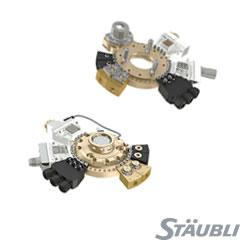Automate 2015: A Comparison of Novel Companies
Robotic End of Press Palletizing Solution
Gear Generator
RoboticsTomorrow.com - Automate 2015 Tradeshow Report
Robots at ProMat to Feature Indian AGVs for the First Time
Company Overcomes Manpower Problems with New Automated Stacking System
Yale OpenHand Project
Robo.Op: Opening Industrial Robotics
Changing Automation with Sensitive Robots
Why I Automate: MPI Systems
The Industrial Automation Exchange
Why I Automate: Manufacturer Finds Promising Gains with Automation
VERSABALL Beer Pong Robot
Four Robotics Related Kickstarters For January
Robot Learning Manipulation Action Plans by "Watching" Unconstrained Videos from the World Wide Web
Records 1036 to 1050 of 1129
First | Previous | Next | Last
Factory Automation - Featured Product

